Disclosure: This post may contain affiliate links from which I will earn a commission.
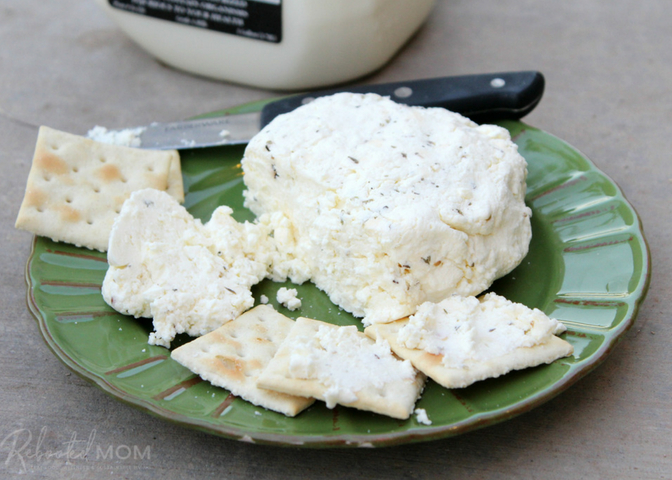
Chevre is a soft cheese made from goat milk, and happens to be one of the easiest cheeses to make at home. Chevrew is usually the entry point to the world of cheesemaking – once you make chevrew, you can move on to queso fresco and then mozzarella…
And perhaps, by that time, move on to harder, aged cheeses.
In most cases, people refer to chevre as just “goat cheese” ~ but what happens when you use raw cow milk instead of goat milk? If you are using raw cow milk to make chevre it’s no longer called chevre but bovre ~ it’s a soft cheese that’s one of the easiest things to make yourself at home.
It’s incredibly delicious as well – you can spread it on crackers, a toasted baguette, or even add to your salad.
Bovre (Chevre) is the Gateway to Cheesemaking
Before making this cheese, I have had plenty of experience making soft cheese using raw cow milk and an acid (lemon juice, or vinegar) – I had also, on many occasions, made mozzarella as well as feta cheese. Most of the other cheeses (not all) require you to heat the milk to 180 degrees F before adding the acid – and since I am using raw milk, there are times when I love to keep the milk as raw as I possibly can.
In that process, I sought out to make bovre cheese because it’s the lowest temperature I can use and still get that separation of curds and whey that I desired.
Bovre, which is chevre made with raw cow milk, requires 3 ingredients: a starter culture, rennet and a gallon or more of raw milk. There are two types of cultures: mesophilic and thermophilic. Mesophilic cultures are used when the milk doesn’t need to be heated over 102 degrees F. Thermophilic is used when the milk is heated to 130 degrees F or more (which is the case in most Italian type cheese).
For bovre cheese I used an MM culture – this one in particular. I also used rennet – which comes in liquid or tablet format. I find liquid to be the easiest to use as it is easier to portion out. Rennet comes as traditional animal rennet or vegetarian – which is derived from plant sources/molds. I use this vegetarian rennet (which is double strength) and the bottle lasts quite a long time – even though I tend to use it to make cheese fairly often.
The amount of rennet and culture you need depends on how much milk you plan to use. The back of the culture box will indicate how many packages of the culture are needed per gallons used. Since my rennet is double strength, only a drop or two is needed.
How to Make Bovre (or Chevre) Cheese
Bovre and Chevre are very similar – bovre is soft cheese made with raw cow milk while chevre is soft cheese made with goat milk.
To make bovre (or, chevre if you are using goat milk), pour your gallon of raw milk into a heavy duty pot on the stove. Heat the milk to 86 degrees F; it’s best to do this on the lowest setting – it’ll take about 15-20 minutes.
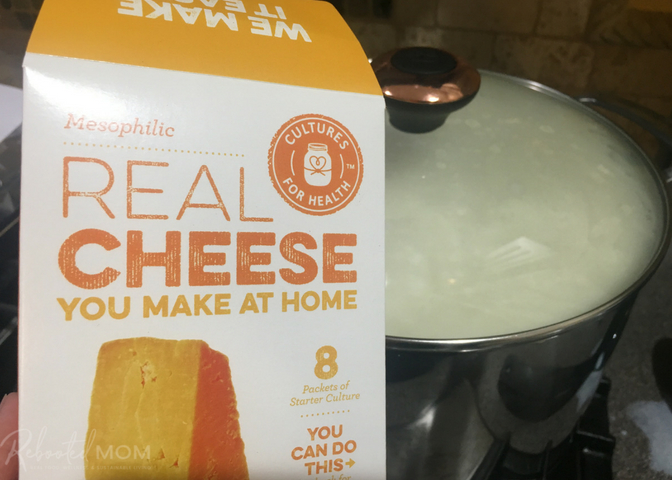
Once the milk reaches 86 degrees F, add the culture and stir for 15 seconds with a wooden spoon. Then add your rennet to water (2 drops of extra strength rennet to 1/4 C water) and carefully pour into your pot of milk.
Stir using an up and down motion for 30 seconds, then gently cover and turn off the heat.
Allow that milk to sit, undisturbed and covered for 12 hours – during that time, the culture and rennet can do their job. I love to do this at night so that I can sleep while the milk is working.
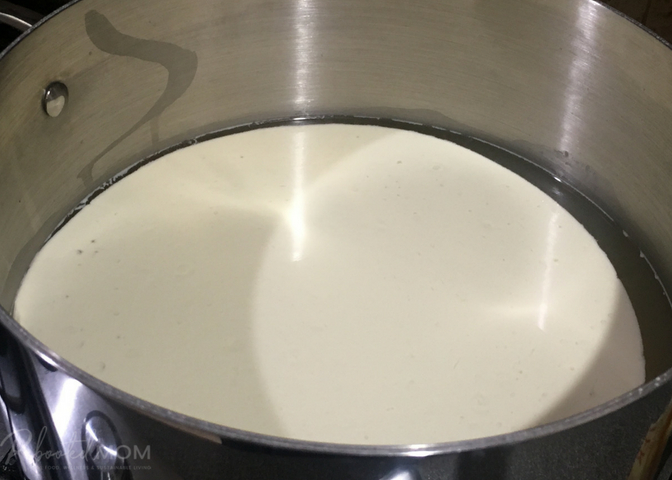
When the 12 hours are up, you should be able to remove the lid and see a visual separation of curds and whey. Line a strainer with dampened cheesecloth (dampen, wring out and place two layers down – criss crossing one over the other).
Ladle out the larger curds into the strainer; then once the larger curds are out, pour the whey gently over those curds in the strainer to get out the remaining smaller ones.
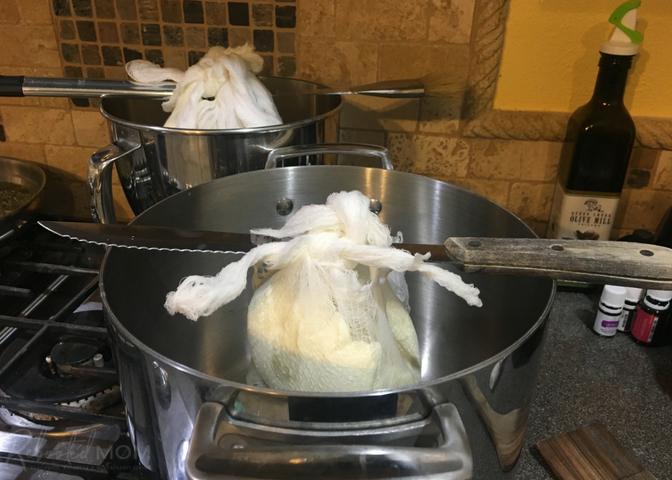
Tie the cheesecloth in a bundle over a ladle and hang over a deep pot to allow to drain for up to 6 hours. If you have knobs on your cabinet, you can hang the cheesecloth over the knobs and allow the whey to drip into a pot underneat.
Do not throw the whey – there are so many ways to use it!

After it has dripped for several hours, unmold from the cheesecloth and season with salt, pepper, or leave it plain. You can also add herbs, or dried fruits. The cheese will keep, if covered, for up to two weeks in the refrigerator – though if you use fresh herbs, it won’t last quite as long.
Mix in ideas:
This cheese has a neutral flavor and so it can be seasoned any way you please – here are some of our favorite ways to dress up the cheese:
- Honey to sweeten and processed in the food processor
- Dried fruit and nuts
- Italian seasoning, salt and pepper
- Brown sugar and pineapple
- Dill, chives and thyme
Do not throw your whey – you can use it for so many things! Use the whey to soak your grains, use it to make your rice or pasta, or use it to make a smoothie. I love to use the whey to make sourdough bread… and sometimes I even use the whey to make cold process soap. It works wonderfully.
Ingredients
- 1 gallon raw milk
- 1/8 tsp direct set mesophilic cheese culture
- 2 drops liquid rennet, diluted in 1/4 C cool water
Instructions
- In a large stockpot, heat your milk to 86 degrees F. Turn off the heat.
- Add your mesophilic culture and stir to dissolve.
- Add your rennet + water solution to the heated milk and stir with an up and down motion for 20-30 seconds until dissolved.
- Cover the stockpot and allow to rest for 12 hours, undisturbed.
- After 12 hours, you should see a visual separation between the curds and whey. Ladle the curds into your strainer (placing a strainer over a larger pot); then carefully pour the whey over the strainer to capture the smaller curds.
- Tie the cheesecloth at the top and hook to a cabinet with a bowl underneath to drain for 6 hours; or, if you don't have the ability to hang from your cabinet, tie the cheesecloth over a wooden spoon and allow to hang over a deep pitcher.
- Drain for up to 6 hours until the whey has stopped draining.
- Unwrap the cheese, and place in a bowl. Season as needed/desired.
- Store in a container - either unshaped, or formed into a round, and refrigerate for up to 2 weeks.
- Each gallon of milk will yield 1 lb of cheese.
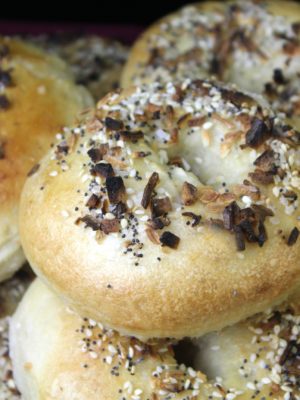
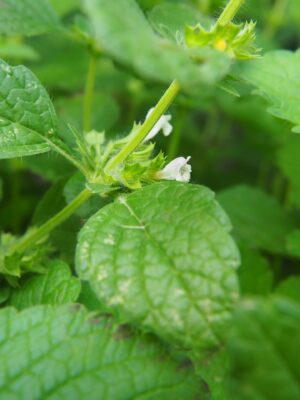
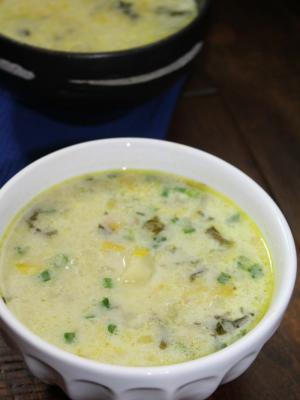
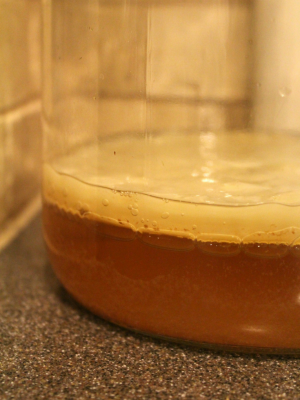
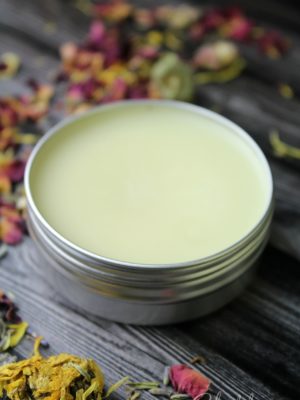
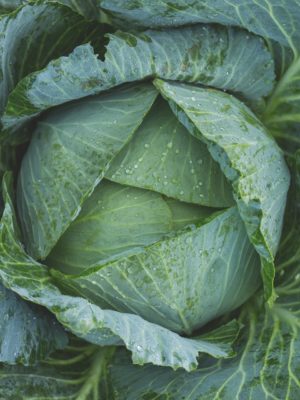
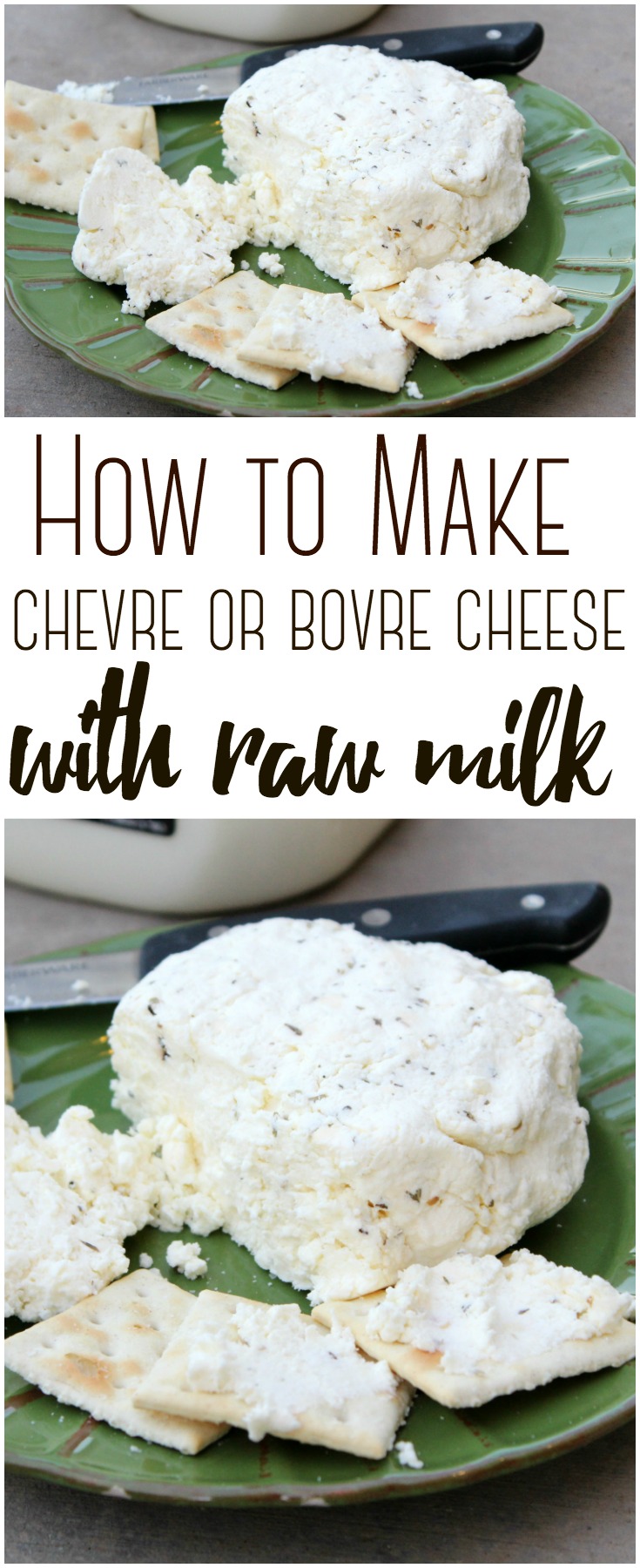

Can I use cultured buttermilk in place of the mesophilic culture? If so, how much?
I haven’t ever tried so I’m not entirely sure!
I used 2 gallons of raw cow’s milk after making butter…used a chevre starter and the rennet! Beautiful mild cheese I can now put herbs etc in. Making homemade pierogies today, this will be great on them instead of sour cream!
Sounds absolutely delicious, Anna! I almost want to pop over for dinner at your house tonight!